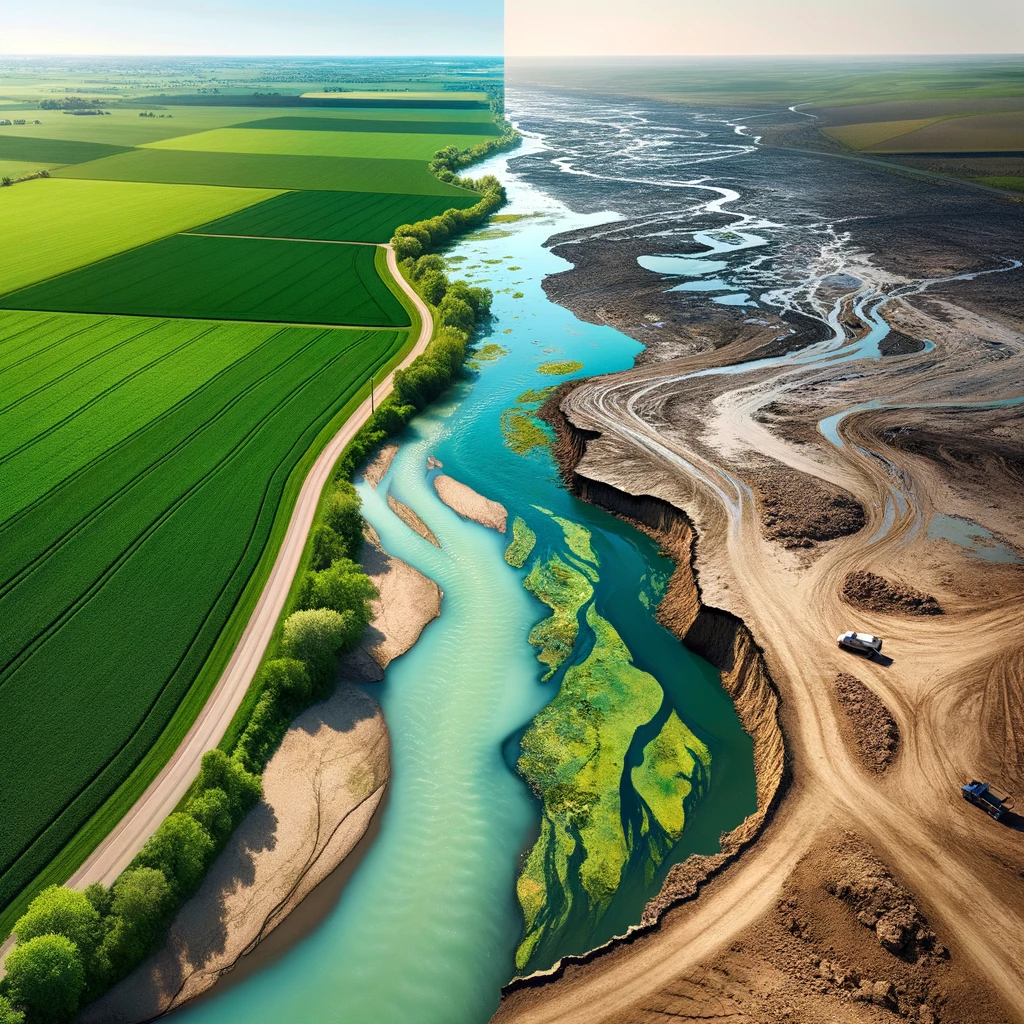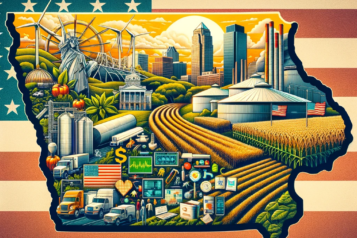In the heartland of America, Iowa’s fertile fields stretch across the landscape, a testament to the state’s deep agricultural roots. However, beneath this verdant expanse lies a growing environmental concern: the twin issues of water quality and soil erosion. These intertwined problems present a complex challenge to the state’s ecosystem and its agricultural sustainability.
Troubled Waters: The State of Iowa’s Water Quality
Iowa’s waterways are suffering. Nitrates and phosphorus, primarily from fertilizer runoff, have become prevalent in streams and rivers, leading to algal blooms that deplete oxygen and threaten aquatic life. The situation has escalated to the point where Des Moines Water Works, the largest water utility in Iowa, sued three counties in 2015 for high nitrate levels in the Raccoon River, a source of drinking water for half a million Iowans.
Efforts to mitigate this issue have seen farmers adopting nutrient reduction strategies, but change is slow, and the results are yet to meet the targets set by the Iowa Nutrient Reduction Strategy. The state’s reliance on voluntary measures, rather than regulatory enforcement, continues to be a topic of heated debate among policymakers, environmentalists, and agricultural interests.
Eroding Foundations: Soil Erosion and Its Impact
Compounding the issue of water quality is the pervasive problem of soil erosion. Iowa loses an estimated 5 tons of soil per acre per year, far exceeding the soil regeneration rate. This loss not only degrades the land’s fertility, crucial for Iowa’s agronomy, but also contributes to the sedimentation and nutrient overload in waterways.
Conservation practices like no-till farming, cover cropping, and the establishment of buffer strips are known to be effective in preventing erosion, but adoption is not universal. The state’s topography, characterized by rolling hills, and the prevalence of intense farming practices exacerbate the erosion problem.
Balancing Act: Agriculture and Environmental Stewardship
The challenge for Iowa is to find a balance between maintaining its agricultural productivity and preserving the environmental health of its water and soil. This balance is critical not just for the state, but for downstream communities all the way to the Gulf of Mexico, where the nutrient runoff contributes to a massive dead zone.
Innovative farming techniques and collaborative efforts between the agricultural community, environmental organizations, and government agencies are essential to address these issues. Iowa’s future as a leader in agriculture depends on it, as does the health and well-being of its residents and the integrity of its natural resources.
The Path Forward
As Iowa confronts these environmental challenges, the path forward requires a collective effort and a shift in both mindset and policy. Initiatives like the Iowa Water and Land Legacy, which seeks to secure funding for conservation programs, are steps in the right direction. But more immediate action may be necessary to quell the tide of degradation.
The eyes of the nation are on Iowa, not just as a political barometer, but as a bellwether for environmental change in agricultural America. How this state responds to the pressing issues of water quality and soil erosion could set the precedent for others to follow. For now, though, the fields of Iowa stand at a crossroads, between a past of unchecked expansion and a future that demands sustainability.
















